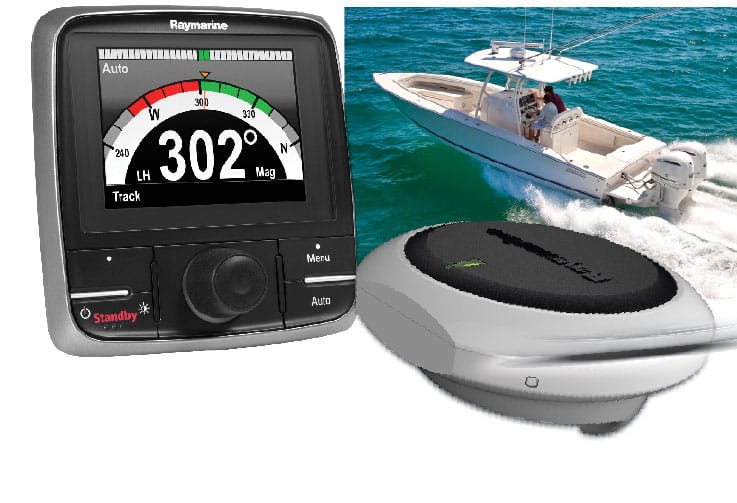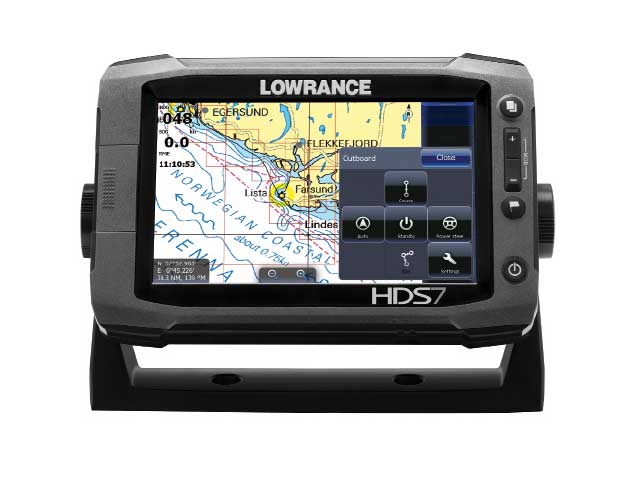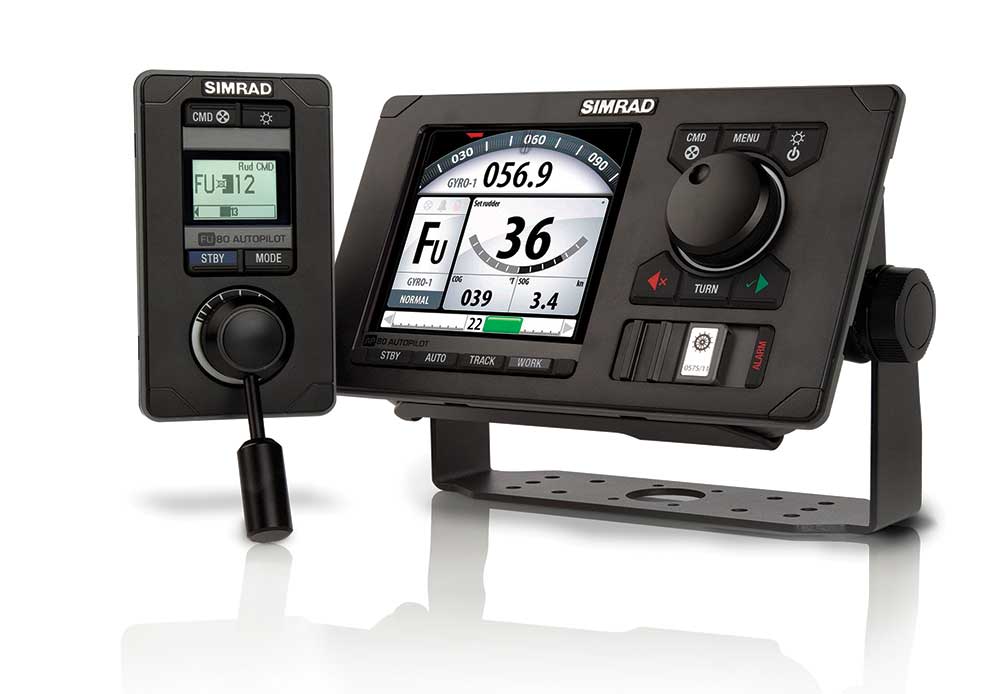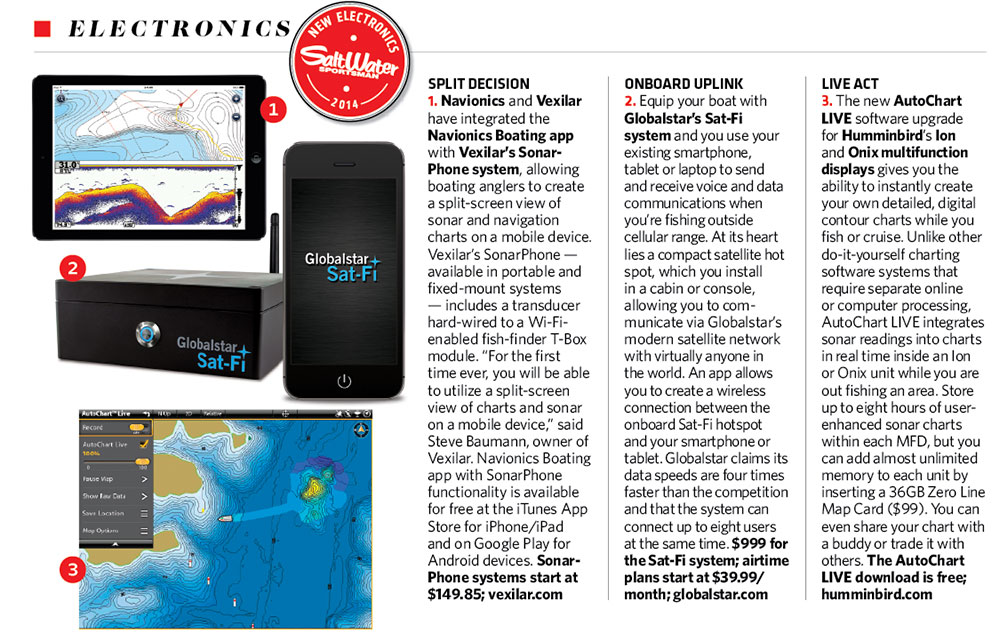Most captains who have experienced the practical advantages of an autopilot say they would never own another boat without one. I count myself among them.
To be clear, an autopilot should never be used as a set-and-forget device. Prudent seamanship demands a lookout at the helm at all times. Yet, when used wisely, autopilot is a wonderful tool that reduces helm fatigue, maximizes fuel economy, maintains a course at night or in fog better than any captain, and frees you up to look for fish and other indicators while trolling or cruising.
Adaptive Tech
Not only do today’s advanced autopilots efficiently guide your boat where you want, some adapt to intricate factors that adversely affect steering.
The most notable example of this smart technology is Raymarine’s Evolution autopilot with the patent-pending HydroBalance. With this software upgrade, it can now sense any elasticity in a boat’s hydraulic-steering system caused by tiny air bubbles in the fluid or minute amounts of flex in the hydraulic lines. Though you might not feel the influences while steering, they allow the boat to wander or “snake” with the ’pilot engaged.
HydroBalance feels these quirks. It quickly and accurately figures out the level of elasticity and compensates for it. “As a result, the boat steers straight and true without any wandering or snaking,” says James McGowan, Raymarine marketing manager.
The same HydroBalance software updates also allow the autopilot to use its supersensitive EV Core 3-D heading sensor to compensate for propeller torque. This adaptive technology instantly detects rapid changes in the boat’s yaw angle and rate of turn caused by prop torque, and instantly corrects — before the boat goes off course, no matter what the speed. Raymarine’s Evolution autopilot system starts at $1,499.99.
Some autopilots sense when you want to revert to manual steering and release control to you. The Shadow Drive feature on Garmin’s GHP 20 with SmartPump autopilot system ($4,049.99 with GHC 20 control/display) automatically disengages when the helm is turned, but it re-engages if the course is held steady.
Colorful Displays
The displays for autopilots are now brighter, more colorful and easier to see. One of the newest examples is Furuno’s new NavPilot 711C (starting at $3,695). This autopilot system features a vivid, sunlight-viewable color-LCD display integrated into the compact control unit. Redesigned to be a cosmetic match with Furuno’s NavNet TZtouch multifunction displays (MFDs), the 711C features a combination of rotary-knob and push-button controls. The autopilot-control units from Garmin, Raymarine and Simrad also feature color displays for better visibility.
In addition, NMEA 2000 outputs on these autopilots allow for relatively simple, plug-and-play integration with compatible touch-screen MFDs, giving you an even bigger display from which to control and view autopilot functions. For example, either of Simrad’s AP70 and AP80 autopilot systems ($1,600 and $3,500) interface with a current Simrad MFD, including the new NSO evo2 system and MO Series multitouch monitors. There are also four free RTM 2.0 software upgrades that endow the AP70 and AP80 with new features such as Quick Command and Quick Dodge steering override functions.
Multimotor Control
The Lowrance Outboard Pilot (starting at $999) ranks in innovation with new autopilot systems for boating anglers. It is the first system designed to control the steering of a boat’s outboard engine and electric trolling motor.
Activated and controlled via integration with a Lowrance HDS Gen2 or HDS Gen2 Touch MFD, Outboard Pilot is designed for single-outboard boats under 30 feet — such as bay boats — and it works with either
hydraulic or cable steering systems.
The Lowrance HDS SmartSteer interface provides the expanded ability to control a MotorGuide Xi5 Pinpoint with GPS electric-steer, bow-mount electric trolling motor. The SmartSteer interface, enabled with a special MotorGuide gateway cable ($249) and free HDS software upgrade, allows anglers to switch between the trolling motor and big motor with the push of a button.
“The Outboard Pilot is a game changer for coastal anglers,” says Leif Ottosson, CEO of Navico (the parent company of Lowrance and Simrad). “It’s like giving anglers an extra pair of hands.”
An autopilot for a trolling motor offers a tactical advantage in a variety of saltwater-angling situations where stealth is important — for instance, working a shoreline more effectively as the boat automatically runs parallel to it. The system’s Anchor Lock feature also holds your boat in position, such as over a wreck, so you can fish it more effectively.
Lowrance is not the only company with an autopilot designed to provide more effective fishing with trolling motors. The iPilot Link system ($799) works with Humminbird MFDs, such as the 788ci HD DI combo unit, to serve as an autopilot for Minn Kota electric-steer bow-mount motors such as the Riptide SP and ST models, though it does not currently offer crossover capabilities for the main engine. iPilot also has Spot Lock to hold your position while you fish a productive spot, without needing to fiddle with the trolling motor or anchor.
The latest systems to hit the market have only reinforced my opinion that autopilot is an indispensable tool for saltwater anglers. And who knows? Perhaps the dramatic innovations might change the minds of a few naysayers when it comes to autopilots.














